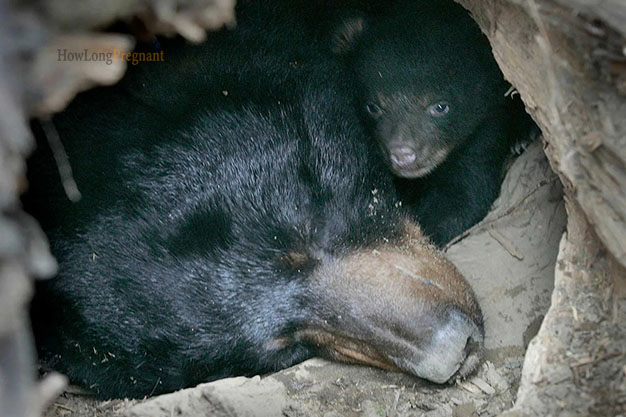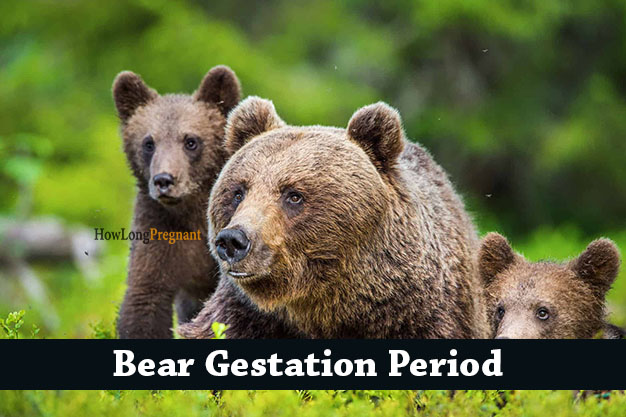Nature enthusiasts find their imagination captivated by bears, whose majestic presence is felt in the wild. There is a field of mystery surrounding bear reproduction which lies far beyond its might.
In this blog, we will look at the mystifying journey that is bear pregnancy and try to show how long it lasts. We are more thrilled about nature when we understand the details involved in bears giving birth.
This blog examines the mysteries of bear reproduction through an understanding of a side of these iconic animals adding further intrigue to their majesty within the wilderness.
Basics of Bear Reproduction
Bear cubs are brought forth by an intriguing blend of biology and nature. Bears are different from some mammals in that they do not adhere to a strict yearly cycle of reproduction. Rather, their fertility relies on such dynamic factors as environmental conditions, food resources and individual animal health.
This particular way of reproducing demonstrates how adaptable and sensitive bears are to their environment. Familiarity with the subtleties of bear reproductive biology enhances one’s understanding of the intricacy of nature and underscores how essential environmental conditions are in determining the reproductive tactics of these exceptional beings.
Also Read - How Long Are Leopard Geckos Pregnant: Guide on their Gestation Period

Gestation Period of Bears
Mother bears carry their babies for a certain period of time. This gestation period varies among bear species. Bearing usually lasts from six to nine months, although the duration may change depending on what kind of bear it is and how the environment affects them.
Pregnancies in brown bears, like grizzlies and Kodiaks, run from six to eight (6-8) months; polar bears living in cold Arctic areas have similar terms. The black bears which are found in various spots across North America take about seven to eight (7-8) months before being delivered.
This time when baby bears are carried by a mother bear is crucial for her to ensure that they develop strong and healthy inside the womb.
Different Species of Bear and Their Gestation Period
There are eight species of bear in the world and some of them have different duration of gestation periods. Here are some of the details of these species and the duration of their gestation period:
Brown Bear
Gestation period takes around six to eight months. These bears are found in different ecosystems, and possess a flexible diet, adjusting to different environments. The gestation period ensures offspring development since most cubs are born during denning time.
Polar Bear
The gestation period of the polar bear is approximately the same as the brown bear (six to eight months). Before giving birth in dens, polar bears have gestation periods that match with their natural habitats in the Arctic. It lasts for environmental circumstances which are aimed at ensuring that cubs are born under favourable conditions.

American Black Bear
The gestation period is about seven to eight months; however, this may vary between individuals. Black bears have a wide distribution across North America, and their synchronization of births during a certain time is helped by gestation periods these animals experience for cub survival in nature.
Sloth Bear
Gestation takes about seven months. Sloth bears native to the Indian subcontinent have gestations tailored towards their seasonal variations so that cubs are born when there is plenty of food available.
Asian Black Bear
This is about six to eight months. Asian black bears from different parts of Asia have adapted to changing environmental conditions, hence their gestation periods which match the seasons of the year and account for success in reproducing.
Sun Bear
The duration is approximately seven to nine months. A sun bear, for example, living in Southeast Asia has a gestation period customized according to the climatic conditions of the region, which ensures that cubs are born during favorable feeding times.
Giant Panda
The duration is about five months long. In China where giant pandas are found, their gestation period takes a relatively shorter length so as to synchronize birth with bamboo flowering seasons that are very important for them.
Spectacled Bear
Its length can range from around seven to eight months. The gestation time of spectacled bears located in South America corresponds with seasonal variations that help little ones survive in their habitats.
Also Read - Hyena Gestation Period: How Long is Hyena Pregnant
Reproductive Strategies
Bears have interesting ways of reproduction that reveal their flexibility to changing patterns in nature. Delayed implantation is one fascinating part about it that occurs in female bears. Following fertilization, the embryo goes into a state where development is halted.
This way, the delayed implantation acts as a biological timetable allowing female bears to give birth to their young ones when favorable environmental conditions and enough food are available. The overall aim of this adaptation through delayed implantation is for those cubs to develop under circumstances that will favor their lives.
By employing this reproductive strategy, not only do bears show how adaptable they are regarding ecological cues but also they illustrate their inherent capability of endowing new generations with an optimum beginning in the ever-changing tapestry of the wild.
Denning Period
While most people are aware that female bears go into a denning period in the late stages of their pregnancy, they do not know what this means. The females use their maternal instincts to choose a suitable den, which is often located in secluded and sheltered areas.
It is within this den that the female bear will give birth and it initiates hibernation. This is a nurturing phase for the cubs who are very vulnerable at birth.
The dens form secure environments, protecting against predation and inclement weather thereby minimizing risks to the young ones as they grow. Maternal care and choice of appropriate breeding dens contribute heavily towards cub survival hence their viability.

Factors Affecting Bears Gestation Period
Several factors influence the gestation period of bears, which can vary depending on the species. The type of bear has the most significant effect with different species having different lengths of gestation. For instance, polar bears may take about 8 months to give birth while brown bears normally carry their young ones for a span between 6 and 9 months.
Additionally, environmental conditions hold a very decisive impression; female bears often time their pregnancies to coincide with periods when there is plenty of food in order to have enough resources for them and their offspring.
Also, the health and age of the female bear will determine how long her time will be; gestational days might be shorter or longer depending on whether she is too young or too old while reproductive rates may also differ among these females at such ages.
Furthermore, such elements as competitive breeding behaviors and access to resources are influential over bear population breeding activity and pregnancy terms. Therefore, comprehending these aspects becomes crucial for conservation programs and other initiatives designed to maintain healthy habitats that will ensure bear survival.
FAQ
Are all bear species pregnant for the same amount of time?
No, the duration of pregnancy in bears is different. This depends on such factors as the type of species, environmental conditions and individual peculiarities.
Is there a delayed implantation during gestation in a bear?
Yes, female bears have delayed implantation. It means that the fertilized egg stops its development for a certain period of time when it gets fertilized so that they can give birth to their cubs at an ideal moment.
Why do bears go into dens during pregnancy?
The period of denning provides safety for female bears when giving birth to their offspring as well as hibernating together with them hence successfully rearing their young ones through critical stages.
What are some ways that adaptation to habitat affects the length of bear’s pregnancies?
Factors such as temperature, availability of food and peculiarities of particular habitats influence the periods during which bear embryo develops indicating how much these animals can adapt.
Why is the gestational period important in bear reproduction?
It is vital that baby bears develop properly in order that they are born at a time when environmental conditions are favorable for them.
How does bear captivity change gestation periods?
Captive conditions like temperature, food availability and habitat design may affect the gestation periods of bears thus demonstrating their adaptability to various environments.
Conclusion
Bear pregnancy span is a deep story about adaptability and evolutionary prowess that shows their finely tuned strategies for survival. Knowing these things enhances our understanding of these beautiful creatures while also creating a greater appreciation for nature’s intricacies around them.
The sight of a bear in its natural surroundings makes one remember the incredible journey from a secluded denning period with its helpless cubs to the miraculous emergence of a new generation, since then moments into this instance have been truly magic.

